
-
Find the right food for your petTake this quiz to see which food may be the best for your furry friend.Find the right food for your petTake this quiz to see which food may be the best for your furry friend.Featured products
 Perfect Digestion Large Breed Puppy Food
Perfect Digestion Large Breed Puppy FoodPrecisely balanced nutrition with Hill's ActivBiome+ prebiotic blend actively contributes to supporting digestive health and overall well-being to help your pet feel their best
Shop Now Perfect Digestion Small & Mini Adult Dog Food
Perfect Digestion Small & Mini Adult Dog FoodHill's Science Plan Perfect Digestion Small & Mini Breed Adult Dog Food with Chicken & Brown Rice supports ultimate digestive well-being & a healthy microbiome.
Shop Now Small & Mini Mature Adult 7+ Dog Food
Small & Mini Mature Adult 7+ Dog FoodHill's Science Plan Small & Mini Breed Mature Adult Dog Food with Chicken is a complete pet food, specially formulated with ActivBiome+ Multi-Benefit Technology.
Tailored nutrition to support graceful ageing in small dogs. Specially made with a synergistic blend of nutrients for energy & vigor.Shop NowFeatured products Kitten Food
Kitten FoodTender chicken chunks in gravy for kittens, with omega-3s for healthy eye & brain development and high-quality protein to support muscle growth. With balanced minerals to promote strong bones & teeth.
Shop Now Hairball & Perfect Coat Adult Cat Food
Hairball & Perfect Coat Adult Cat FoodHill's Science Plan HAIRBALL & PERFECT COAT Adult cat food with Chicken is specially formulated to effectively help avoid hairball formation in adult cats while promoting a beautiful coat. Thanks to its mix of essential Omega-6 fatty acids, this food benefits the cat's skin and fur keeping them healthy and shiny. Our Advanced Fibre Technology helps reduce hairballs by naturally promoting their passage through the gut. This food is formulated with high-quality protein for a perfectly balanced, great-tasting recipe.
Shop Now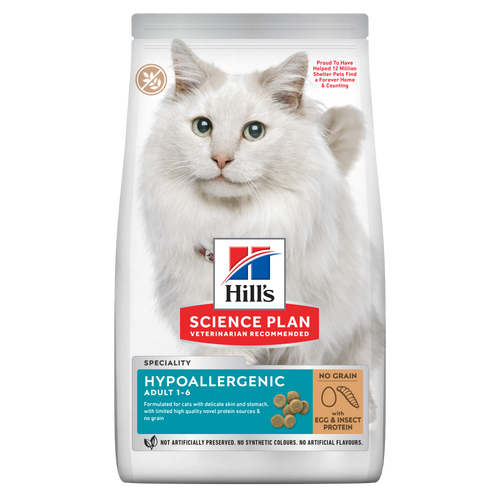 Hypoallergenic Dry Cat Food
Hypoallergenic Dry Cat FoodHILL'S SCIENCE PLAN Hypoallergenic Adult cat food with egg & insect protein is a complete pet food for adult cat 1–6 years old. It's formulated for cats with delicate skin and stomach, with limited high quality novel protein sources & no grain.
Shop Now -
Dog
- Dog Tips & Articles
-
Health Category
- Weight
- Food & Environmental Sensitivities
- Urinary
- Digestive
- Joint
- Kidney
-
Life Stage
- Puppy Nutrition
- Adult Nutrition
- Senior Nutrition
Cat- Cat Tips & Articles
-
Health Category
- Weight
- Skin & Food Sensitivities
- Urinary
- Digestive
- Kidney
-
Life Stage
- Kitten Nutrition
- Adult Nutrition
Featured articles The Right Diet For Your Pet
The Right Diet For Your PetLearn what to look for in healthy pet food & nutrition, including ingredients, quality of the manufacturer, your pet's age, and any special needs they have
Read More Understanding Your Pet's Microbiome
Understanding Your Pet's MicrobiomeLearn what a pet's microbiome is, how it contributes to your pet's gut & overall health, and why nutrition is important in maintaining healthy microbiomes.
Read More Pet Food Storage Tips
Pet Food Storage TipsWhere you store your cat and dog food can make a big difference in the quality and freshness once it is opened. Here are some common questions and recommendations for optimal storage for all of Hill’s dry and canned cat and dog food.
Read More -


Although cat leukemia, also known as feline leukemia virus or FeLV, can be a difficult virus to manage, pets with it can still live happy, relatively long lives. Understanding feline leukemia symptoms can help you better care for a cat with this disease. Additionally, by being familiar with FeLV itself, you may be able to detect it sooner or prevent it altogether.
What Is Cat Leukemia? Is it Contagious?
According to the College of Veterinary Medicine at Cornell University, FeLV affects 2% to 3% of all healthy cats in the United States and up to 30% of cats who are sick or high risk. It's an infectious & contagious viral disease that's spread between cats, mostly through saliva and/or blood contact. FeLV can also be spread through urine and feces, and from a mother cat to her kitten in utero or through the mother's milk.
While FeLV can be contracted through fighting, it's better known as a "loving disease" — cats can spread it by rubbing noses and grooming each other. Note: A cat with FeLV can still spread the disease if they appear perfectly healthy.
FeLV is one of the leading causes of death among cats in the U.S., says Fetch by WebMD, outpaced only by trauma-related deaths. Fortunately, the incidence of FeLV has decreased significantly thanks to early detection, broader awareness of the signs and an effective vaccine.
What Are the Feline Leukemia Symptoms?
FeLV infections can be tricky for two main reasons: the virus attacks many systems in the body, and the signs vary depending on which system is affected. It is one of the most common causes of cancer in cats and can cause blood disorders. Feline leukemia weakens the immune system of an affected cat, leaving them susceptible to secondary infections.
A cat who's been recently infected may not show signs at all; however, over time, their health will slowly decline due to repeated infections or cancer. Cats with feline leukemia may demonstrate:
- Weight loss
- Poor appetite
- Unkempt fur or poor hair coat
- Persistent or recurrent fevers
- Swollen lymph nodes
- Pale or inflamed gums
- Eye problems
- Seizures
- Chronic diarrhea or runny stools
Recurrent infections of the skin, bladder, nose and/or eyes are also common signs of cat leukemia.
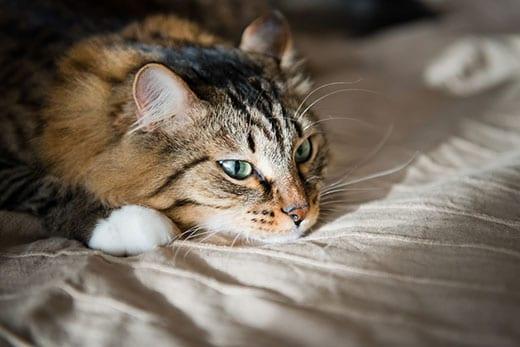
How Is Cat Leukemia Diagnosed?
If your veterinarian suspects your cat has FeLV, they can be screened through a simple ELISA snap blood test. If your veterinarian uses a reference laboratory, snap test results can be available within 24 hours. In some instances, this test can also be performed right in the office while you wait.
The snap test detects the virus in the blood; however, it is not 100 percent accurate. If a cat tests positive for FeLV, another blood sample must be sent to the lab to confirm infection through an IFA test (immunofluorescent antibody assay: a scientific test to look for specific antibodies that are present with FeLV). In some cases, a PCR (polymerase chain reaction) blood test is run as well. Your vet will be the best resource on which test is right for your cat.


Tasty Tips
What If My Cat Tests Positive for FeLV?
First thing's first: Do not panic. One positive test result doesn't necessarily mean your cat has FeLV. For example, false-positive results can occur in kittens exposed to the virus without them actually being infected. The American Association of Feline Practitioners recommends testing kittens, and advises pet parents to isolate any kitten who tests positive from other cats as a preventive measure. The kitten should be retested one month later, at 6 months of age, and again at 1 year of age.
If your older feline companion tests positive on the snap test, you'll also need to isolate them from other cats to prevent any spread of disease. Then, talk to your vet about having the snap test rerun and the IFA test run immediately. From this process, you can expect two main outcomes:
- If both tests are positive, then your cat is likely infected with FeLV.
- If the snap test is positive but the IFA test is negative, then your cat has been exposed but may be able to fight off the infection. Isolate your cat from other cats and have them retested in 30 to 60 days.
Based on the combined result of these tests, your vet will be able to make the most accurate recommendation regarding what to do next.
What Is the Treatment for Cat Leukemia?
There is no definitive cure for FeLV; however, with the right care, cats with the disease can live relatively long periods without feeling ill. Still, it's important that your cat stays under the close supervision of a vet who can promptly head off any problems, such as complications from secondary infections, to ensure they stay as healthy as possible. Twice yearly vet examinations are recommended, which may include annual or biannual blood or urine tests.
As FeLV can be easily spread to other cats, it's crucial that pets who are infected stay strictly indoors, ideally in a home where they're the only cat. Cats with FeLV may be more affected by stressful environments. Providing indoor enrichment, such as adding toys or new elements to their play space, can help reduce stress. Also, consider having a vet come to your home to suggest ways you can make the space more soothing for a cat with FeLV.
Because they have a weakened immune system, cats with FeLV should not be fed raw food, but instead a complete and balanced dry and/or canned food.
Can Cat Leukemia Be Prevented?
Yes, cat leukemia can be prevented through vaccination and by keeping your pet indoors and away from other infected animals. If your cat does go outdoors, protect them by keeping them on a leash or providing an enclosed outdoor structure. The FeLV vaccine is considered a lifestyle vaccine, so talk with your vet about its pros and cons. You can make the decision together regarding if it's right for your cat.
While it can be emotionally taxing to receive a cat leukemia diagnosis, it's important to stay calm while you put together a plan with your veterinarian. The best course of action you can take is to follow their advice to a T.


Dr. Sarah Wooten graduated from UC Davis School of Veterinary Medicine in 2002. A member of the American Society of Veterinary Journalists, Dr. Wooten divides her professional time between small animal practice in Greeley, Colorado, public speaking on associate issues, leadership, and client communication, and writing. She enjoys camping with her family, skiing, SCUBA, and participating in triathlons.
Related products

Hill's Science Plan HAIRBALL & PERFECT COAT Adult cat food with Chicken is specially formulated to effectively help avoid hairball formation in adult cats while promoting a beautiful coat. Thanks to its mix of essential Omega-6 fatty acids, this food benefits the cat's skin and fur keeping them healthy and shiny. Our Advanced Fibre Technology helps reduce hairballs by naturally promoting their passage through the gut. This food is formulated with high-quality protein for a perfectly balanced, great-tasting recipe.
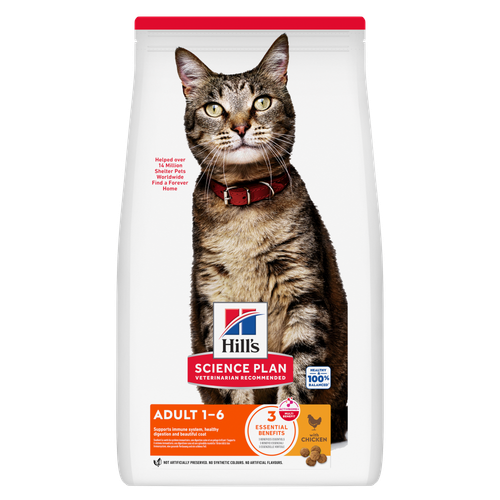
Hill's Science Plan Adult Cat Food with Chicken is a complete pet food, specially formulated with ActivBiome+ Multi-Benefit Technology.
This food is specially formulated to fuel the energy needs of cats during the prime of their life.

Tender chicken chunks in gravy for kittens, with omega-3s for healthy eye & brain development and high-quality protein to support muscle growth. With balanced minerals to promote strong bones & teeth.

HILL'S SCIENCE PLAN Hypoallergenic Adult cat food with egg & insect protein is a complete pet food for adult cat 1–6 years old. It's formulated for cats with delicate skin and stomach, with limited high quality novel protein sources & no grain.
Related articles
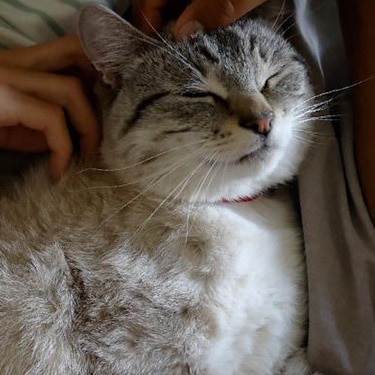
Find out about how you can support your cat's digestion to boost overall health. Diet is key to a long and happy life for your cat, so discover what you can do.
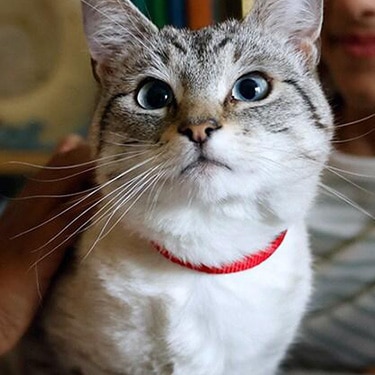
Discover what you can do to spot and support a sensitive cat stomach. See what routines and food you can implement to help your cat be happy and healthy.

Discover which cat toys games your feline friend might like, and how they are great sources of exercise. Explore our library of articles to learn more.

When learning how to train your cat, you'll start with very basic first steps that both reward good behavior and discourage the bad.
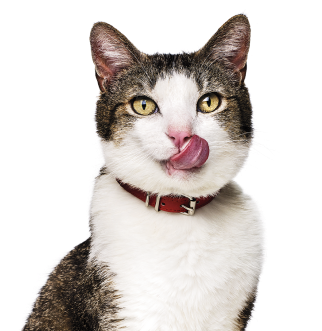
Put your cat on a diet without them knowing
Our low calorie formula helps you control your cat's weight. It's packed with high-quality protein for building lean muscles, and made with purposeful ingredients for a flavorful, nutritious meal. Clinically proven antioxidants, Vitamin C+E, help promote a healthy immune system.
Put your cat on a diet without them knowing
Our low calorie formula helps you control your cat's weight. It's packed with high-quality protein for building lean muscles, and made with purposeful ingredients for a flavorful, nutritious meal. Clinically proven antioxidants, Vitamin C+E, help promote a healthy immune system.

